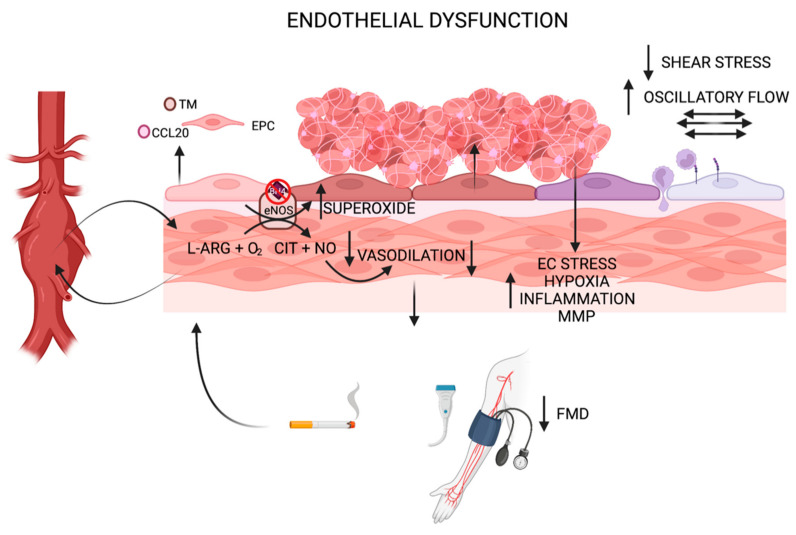Figure 1.
Diagram depicting mechanisms by which endothelial dysfunction contributes to AAA growth, including eNOS uncoupling, a phenotypic switch to a pro-thrombotic, pro-adhesive, permeable state in the setting of altered biomechanical stress, and EC stress generated by intraluminal thrombus accumulation. EC populations 1 and 2 as determined by single-cell RNA sequencing are shown in distinct colors (pink, purple) in low (light) and high (dark) stress states. Potential biomarkers (circulating TM, CCL2, EPCs, and FMD analysis) are depicted. Tobacco use is highlighted as a clinical risk factor for endothelial dysfunction and AAA progression. Abbreviations: AAA (abdominal aortic aneurysm); ARG (arginine); CCL20 (C-C Motif Chemokine Ligand 20); CIT (citrulline); EC (endothelial cell); eNOS (endothelial nitric oxide synthase); EPC (endothelial progenitor cell); FMD (flow mediated dilation); MMP (matrix metalloproteinase); NO (nitric oxide); TM (thrombomodulin).

